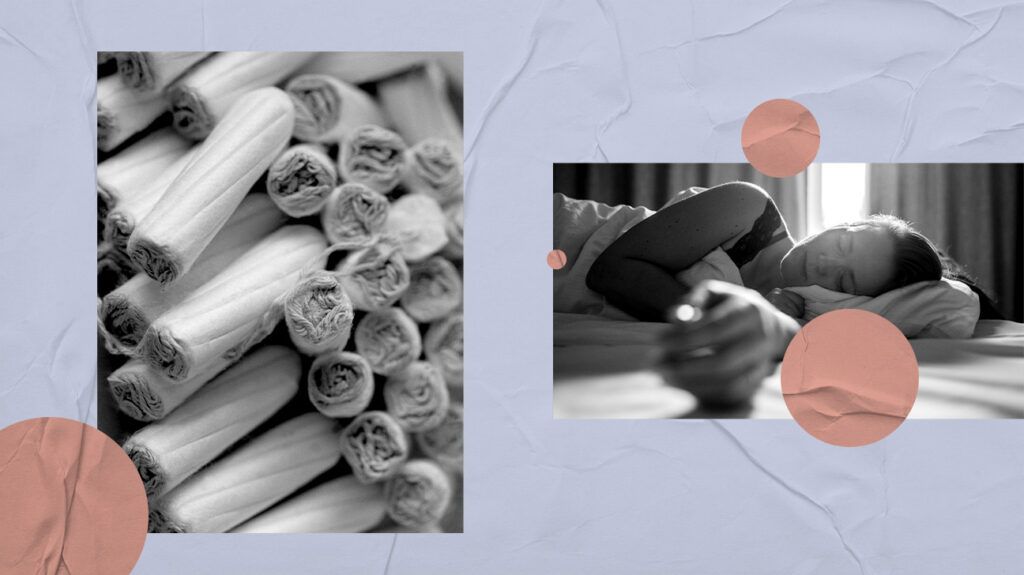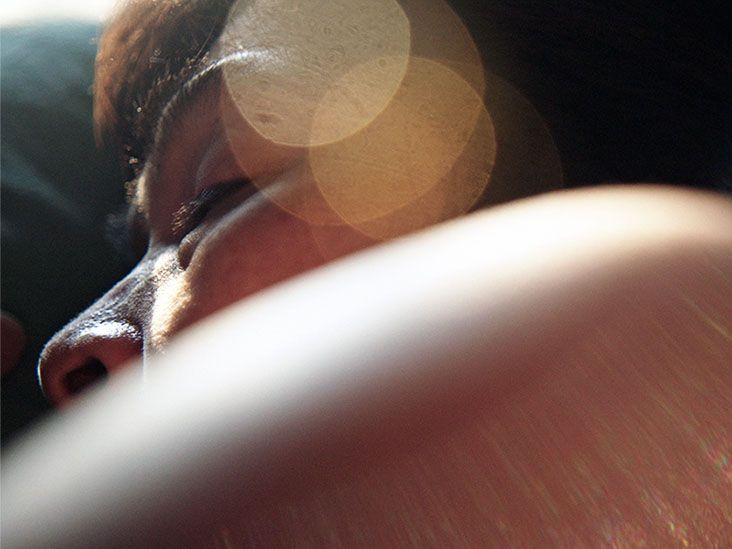It is generally safe to sleep with a tampon. However, people must not wear a tampon for longer than 8 hours in total. People should use the lowest absorbency that is suitable for their menstrual flow.
Using a tampon improperly while sleeping, such as for longer than 8 hours, may increase a person’s risk of side effects and complications. In some cases, these may be severe, such as developing toxic shock syndrome (TSS).
If people plan to sleep longer than 8 hours and cannot or do not want to change their tampon during this time, alternative menstruation products may be more suitable.

The
Generally, tampons are safe to use as long as a person does not wear them for longer than 8 hours. People should typically change a tampon when it is soaked through. However, this may be challenging if a person is sleeping.
The following tips may help to ensure a person stays safe and reduces the risk of complications while wearing a tampon during sleep:
- Insert the tampon just before going to sleep.
- Set an alarm to ensure they change the tampon within 8 hours.
- Read and follow the instructions on the package.
- Wash the hands before and after inserting the tampon.
- Use the
lowestTrusted Source absorbency level suitable for their menstrual flow.
If someone plans to sleep for longer than 8 hours or worries about bleeding too much for their tampon to last until they wake, they may benefit from considering alternative menstrual products.
A potential complication that people can experience when using tampons is a
A 2023 article discussing a safety assessment of tampons highlights older research noting that the risk of TSS increases with tampon use.
A 2020 study indicated the risk of TSS was three times higher in study participants who wore a tampon while sleeping for longer than 8 hours.
TSS can be life threatening,
However, the Food and Drug Administration (FDA) reports that the rate of reports of TSS due to tampon use has
People who wear a tampon while sleeping may also experience general risks and side effects associated with tampon use. This may include pain due to incorrect insertion or bleeding through the tampon, which a person may not notice if they are asleep.
If a person does not want to wear tampons while sleeping or thinks they may be unsuitable, there are various alternative menstrual products they can consider. This includes:
- sanitary pads
- menstrual cups
- menstrual discs
- reusable period pants
Some types of sanitary pads require people to change them
Reusable menstrual products, such as menstrual cups, discs, or period pants, may have benefits for people who do not have good access to tampons and other disposable period products.
However, the upfront cost of reusable products may be higher than disposable options. Disposable products may also be safer for people who do not have access to hygienic facilities to properly sanitize reusable products.
If someone chooses to use tampons, selecting disposable options are the better choice. The
People should not wear a tampon for longer than 8 hours, whether they are asleep or awake. Ideally, people should change a tampon every 4 to 8 hours.
The FDA recommends that people use the lowest absorbency of tampon suitable for their menstrual flow.
A 2023 literature review suggests that menstrual cups have a lower risk of TSS than tampons. However, people who use menstrual cups can still develop TSS.
Other adverse effects that menstrual cups may cause include infections, such as bacterial vaginosis or a urinary tract infection.
People can wear tampons while sleeping as long as the entire duration of use does not exceed 8 hours. To ensure this, people may need to insert the tampon just before sleeping and set an alarm to ensure they wake in time to change it.
Leaving a tampon in for too long can increase a person’s risk of toxic shock syndrome (TSS). TSS is a potentially life threatening condition that requires urgent medical attention.
If someone thinks they may sleep for longer than 8 hours, alternative menstrual products may be more suitable. This may include menstrual cups or reusable period pants.


